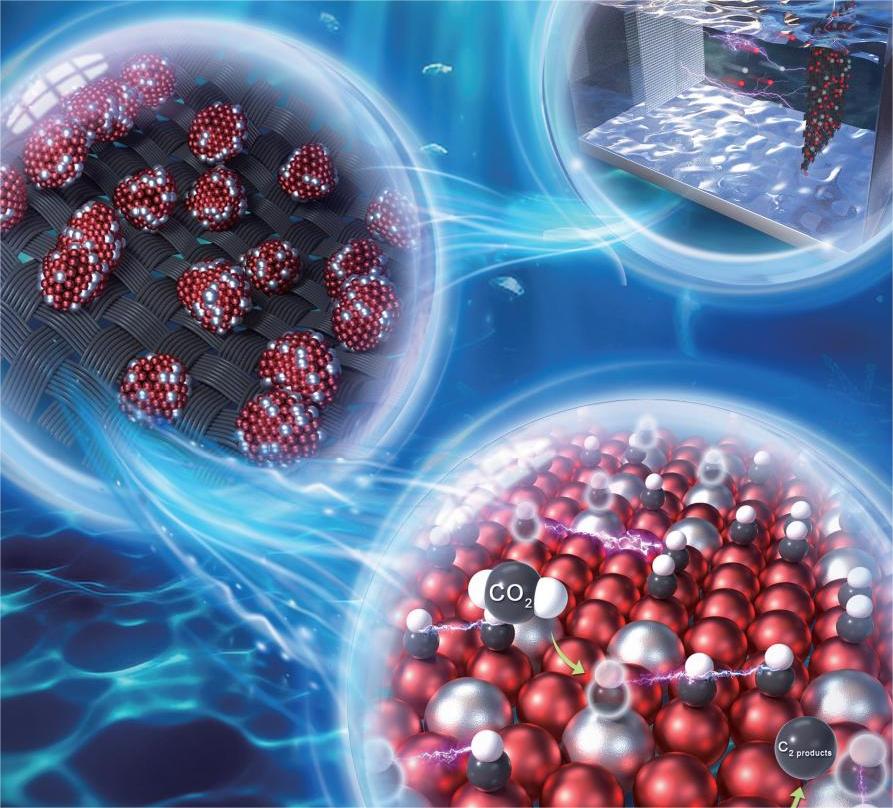
Ting DENG, Shuaiqiang JIA, Shitao HAN, et al. Electrochemical CO2 reduction to C2+ products with Cu/Zn intermetallic compounds synthesized by simple electrodeposition. P80–88
The promotion of electrochemical CO2 reduction (ECR) for use in fuels or chemicals will hopefully address global warming and energy crisis. Among many metallic catalysts applied in ECR, Cu has been considered the most promising metallic catalyst for ECR industrial applications because it favorably combines with most intermediates of ECR to produce a variety of high-value-added multi-carbon (C2+) products. However, the selectivity of Cu for specific products remains poor in ECR, which seriously increases the difficulty and cost of product purification in practical industrial applications. Intermetallic compounds (IMCs) have precise atomic structures and unique electronic properties, making them excellent catalysts. However, complex preparation methods hinder precise microstructure control, impeding the identification of active sites. This work reports a one-step electrodeposition method to introduce Zn, a metal with weak *CO binding energy, into Cu-based catalysts to form Cu/Zn IMCs. This method is not only simple but also greatly improves the electrocatalytic performance. As a result of synthetic tunability, we were able to reveal the role of Cu/Zn IMCs in promoting C2+ products, which together lead to enhancement of the Faradaic efficiency of C2+ products and enhancement of the current density in the ECR compared with counterparts of pure Cu. This work offers novel ways to control the synthesis of precise intermetallic structures and provides insights for designing advanced ECR catalysts.
Download cover